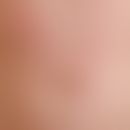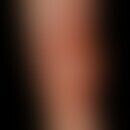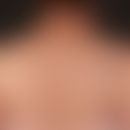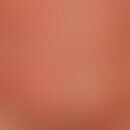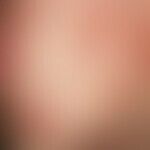Synonym(s)
HistoryThis section has been translated automatically.
Hjörth and Roed-Petersen, 1975
DefinitionThis section has been translated automatically.
You might also be interested in
EtiopathogenesisThis section has been translated automatically.
Allergic substances: animal or vegetable substances, foodstuffs, cosmetics, industrial substances.
Non-allergic (toxic) substances: plant triggers (see table), caterpillar poison (especially poison of the processionary caterpillar, see below caterpillar dermatitis), jellyfish, sea anemones, insect poisons (sting and bite reactions). Histamine-liberating substances that can be found in external substances such as: caffeine, bacitracin, polymyxin, etc.
Plant triggers of contact urticaria:
- Fruits: Apple, orange, apricot, banana, pear, fig, grapefruit, plum, peach, lemon
- Vegetables: cauliflower, endive, cucumber, potato, cabbage, lettuce, carrot, corn, celery, onion
- Spices: Chilli pepper, dill, garlic, parsley, chicory
- Others: stinging nettle (see below stinging nettle urticaria), chrysanthemum, thistle, itching bean, ricinus oil, garden tulip.
LocalizationThis section has been translated automatically.
ClinicThis section has been translated automatically.
The clinical appearance ranges from a localised reaction (especially in the allergic form) to the development of anaphylactic shock. Typical are acute, sharply defined, itchy or burning "contact prints" caused by the triggering substances or the triggering mechanism (e.g. exposure to cold). This often results in bizarre, "inorganic" patterns on the skin. These exogenous contact patterns are easily recognizable and thus in many cases diagnostic.
Clinical severity:
- Grade 1: Localized urticaria (itching, redness, wheals) limited to the site of exposure.
- Grade 2: additionally generalized urticaria
- Grade 3: additionally rhinoconjunctivitis, bronchospasm, complaints in oropharynx and gastrointestinal tract
- Grade 4: additional anaphylactic shock.
Differential diagnosisThis section has been translated automatically.
TherapyThis section has been translated automatically.
External therapyThis section has been translated automatically.
Internal therapyThis section has been translated automatically.
In histamine-mediated forms from stage 2 glucocorticoids in high dosage such as prednisolone (e.g. Decortin H) 100-150 mg/day (rapid balancing) in combination with antihistamines such as dimetinden (e.g. Fenistil) 1-2 amp. i.v.
From stage 3 onwards, therapy appropriate to the stage, see shock, anaphylactic.
Acetylsalicylic acid (e.g. ASS) may be helpful in severe cases of the non-histamine-mediated forms.
TablesThis section has been translated automatically.
Selection of possible triggers of contact urticaria
Foodstuffs/plants/plant ingredients |
Medicines/Externa |
Industrial materials/metals |
Animal substances |
Textiles |
|
Algae Alcohol Apples Eggs Endives Fish, Lichens Gelatine Spices Cucumbers Chicken Lobster Potatoes Potatoes Cheese Garlic Lamb Latex Leeks Horseradish Melon Milk protein Carrots Perfumes Parsley Pollen Rice Chives Tomatoes Turkey Wheat flour Lemons Onions |
Aminophenazone Aspirin Bacitracin Benzoephenones Cetylstearyl alcohol Chephalosporins Chlorpromazine Diethyltoluamide Gentamicin Cod liver oil Mechloroethane hydrochloride Menthol Monoamylamine Neomycin Estrogen creams Penicillin G Polyethylene glycol polysorbate 60 Promethazine Streptomycin Tetanus antitoxin |
Acrylic monomers Aliphytic polyamides Aminothiazole Ammonia Chromium compounds Enzymes (amylase, cellulase, xylamase) Formaldehyde Iridium compounds Lindane Sodium sulphite Nickel Phenyl mercury propionate Phthalic anhydrides Platinum compounds Rhizinus beans Sulphur dioxide Terpinyl acetate |
Hair Insect venoms Casein Cockroaches Placenta Shed Seminal plasma (human) Mealworms Serum Saliva |
Perlon Silk Wool |
LiteratureThis section has been translated automatically.
- Coelho EQ et al (2019) Contact urticaria following the use of a cosmetic containing caprylyl glycol: A case report. Contact dermatitis 81:308-309.
- Maloney NJ et al (2019) Dupilumab in Dermatology: Potential for Uses Beyond Atopic Dermatitis. J Drugs Dermatol 18 pii: S1545961619P1053X.
- Sukakul T et al (2019) Contact urticaria caused by salicylic acid in a chemical peel solution. Contact dermatitis doi: 10.1111/cod.13405.
- Süß H et al (2019) Contact urticaria: Frequency, elicitors and cofactors in three cohorts (Information Network of Departments of Dermatology; Network of Anaphylaxis; and Department of Dermatology, University Hospital Erlangen, Germany). Contact dermatitis 81:341-353.
Incoming links (24)
Allergy syndrome, oral; Ammonium persulfate; Beer allergy; Betamethasone valerate emulsion hydrophilic 0,025/0,05 or 0,1 % (nrf 11.47.); Bibernelle large; Birch; Birch pollen allergy; Butylhydroxyanisole; Butylhydroxytoluene (bht); Cannabis allergy; ... Show allOutgoing links (24)
Acetylsalicylic acid; Anaphylactic shock; Antihistamines, systemic; Betamethasone; Betamethasone valerate emulsion hydrophilic 0,025/0,05 or 0,1 % (nrf 11.47.); Caterpillar dermatitis; Celery; Chrysanthemum; Contact dermatitis allergic; Contact dermatitis toxic; ... Show allDisclaimer
Please ask your physician for a reliable diagnosis. This website is only meant as a reference.

